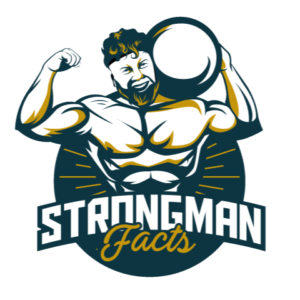The 5 Most Iconic Manhood Stones Of Strength In Scotland
In cultures across the globe men have had to prove their rite of passage from boyhood through trial to be considered equal with all responsibilities and rights of their adult peers.
Scotland and Iceland are especially notable for so called “manhood” or Clach Cuid Fir stones.
The successful lift would earn the initiated rights of work with their peers and a share of food and all privileges in a more brutal period of history, where strength was your key to success and survival.
Specifically to Scotland, native clans in different regions of the country often had their own rituals / testing stone to prove their worth.
Such rituals have since been lost to time, however in an ever evolving world loosing sight of its heritage, a re-discovery and safekeeping of these stones has prompted many to seek out the tests of their ancestors to feel closer to their roots, or learn more about the culture of Scotland.
The Dinnie Stones
Rediscovered by David Webster OBE in 1953, locally known as the “Dinnie Steens” consist of two solid granite boulders currently residing outside the Old Potrach Hotel in Aberdeenshire.
At a combined weight of 332.49kg (the lesser stone 144.47kg & the larger 188.02kg) this is no place for a beginner and will require technique as much as lifting strength.
Originally used as counterweights for the construction of the Potarch Bridge they were carried famously by Mr Donald Dinnie himself the width of the bridge with his bare hands (14’1.5) in the 19th century before being lost to time for the next 100 years.
Now such a famous feat of strength attempted by words strongest men, with the stones accurately re-created in America as an event in the Arnold Strongman Classic.
You can even buy custom plate loadable rings to practice your grip and technique prior to taking the journey to attempt them yourself.
A successful lift will earn you a place in the stones history book along side the likes of Eddie Hall, Big Loz, Brian Shaw, Nick Best and Robert Orberst.
The Ardblair Stones
The Ardblair Stones are nine Atlas stones ascending in weight from 18-152kg (40-335lbs).
The stones must be lifted in order from lightest to heaviest onto whisky barrels.
Commonly transported around Scotland for various events and highland games, the winner of the event is judged by number of stones attempted and the time in which they were lifted.
The last stone in particular is what often separates amateurs from professionals sitting at 152Kg.
Named after Ardblair Castle in Blairgowrie these stones do not have the same heritage as other testing stones across the country, only coming into being after being created in 2008.
They are now a staple in the most prestigious strength events in Scotland since the Blairgowrie & Rattray Highland Games on Sunday 2nd September 2012.
The Inver Stone
Lift this stone to your chest and allegedly you will earn a free pint at the Inver Pub and a place in its log book.
Weighing 260Lbs (as is carved to the stone itself) the stones history dates back at least 300 years and is currently residing at the cottage accross the road from the Inver Hotel (Please ask permission out of respect to the current land owner and stone keeper before attempting).
The strongest of the strong shoulder mount the stone, known to be exceptionally slippery when wet and puts up a fight, this is commonly a stone that humbles peoples squat, dead lift and atlas stone PR’s.
The Dalwhinnie Stone
Dalwhinnie is the highest altitude town in the UK, also home to a very fine whisky distillery nearby.
In these high altitudes the Dalwhinnie stone weighing 240lbs lies outside the front of The Snack Shack, and is considered a good starter for those looking to begin their tour of stone lifting in Scotland.
It is advisable to train your wrist strength as the grip can be very taxing and “open”
This stone also features in the Rogue film STONELAND.
Also it has been known to put up a fight on your forearms when slippery in wet weather, a lift to your chest is impressive. Some are able to take a step further and shoulder or over head press the entire unforgiving lump of gratine.
The Sadlin Mare Stone
“In this still place, remote from men
Sleeps Ossian, in the narrow glen”
This test requires the cannon ball-like stone which was known among men who were challenged to lift it, as the saddle for the mare’s back to which it should be placed.
At 100Kg this may not be the heaviest stone, however is a test of endurance and skill to put atop its large throne.
Located in Sma Glen north of the town of Crieff on the border between the lowlands and highlands of Scotland, this test sits along what was once a cattle road extending to Perthshire.
Though not as popular as some of the stones mentioned above it more than deserves a worthy mention as the energy and history of the site remains unchanged through time, a true destination for anyone looking to see into the past.



